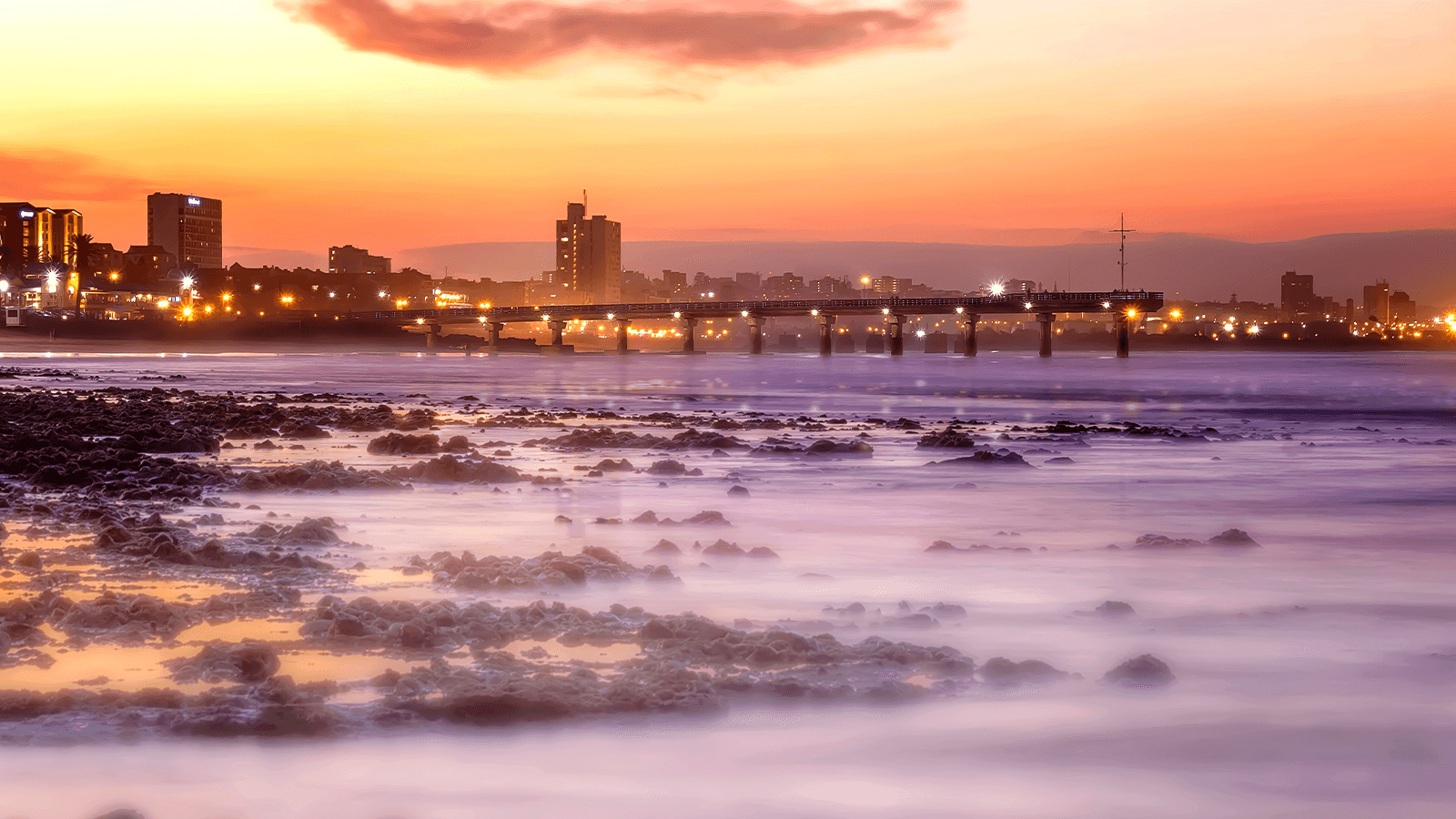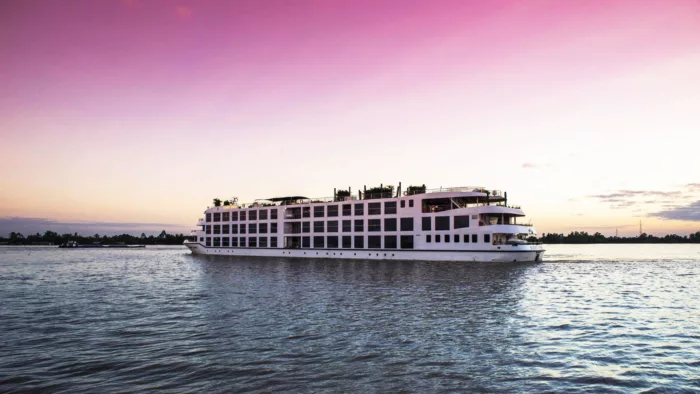
The rumour mill: Cruise lines won't go to Guernsey
According to various news sources, the Channel Island of Guernsey has fallen foul of major cruise lines. This feels hard to believe, as Guernsey offers stunning natural beauty, friendly people, and many attractions. Yet, cruise traffic continues to dip – so what’s going on?
Back in 2019, Guernsey had a problem. And it had nothing to do with literacy or potato peel pie.
Before Wuhan’s COVID-19 pandemic stripped the Channel Islands of cruise activity, industry analysts started making ugly noises regarding passenger numbers. Yet, these weren’t rose-gilded complaints recently trademarked by Amsterdam, Bora Bora and Venice. Quite the opposite.
Rather than protesting the large number of cruise ship visits, Guernsey sounded the alarm about their dwindling port calls. The harbour was empty and supposedly racking up debt akin to Oliver Reed on a pub crawl. A bailout figure of £6.2 million loomed across local headlines. There was trouble in paradise.
The situation became so turbulent that local businesses stopped making budgetary plans for seasonality. While some retailers, tour operators, and cafes still witnessed a boost during the cruise season, they were increasingly diversifying their offerings to attract local residents and independent travellers in order to survive.

Andy Ison, director of Guernsey Pearl and Guernsey Jewellery, told the BBC that his shop at Rocquaine previously benefited from the arrival of coaches used by cruise passengers.
"We used to really look forward to the cruise liner season, and now, I don't even look at the cruise liner list because it's no longer a significant effect to the business," he said. "Without a radical change, I just can't see it picking up."
Once a hugely popular destination for the likes of Cunard, P&O and Princess, returning visits from big-spending cruise leviathans were suddenly drying up faster than Matt Hancock’s crocodile tears. A big headache was brewing.
Guernsey’s economy rather enjoyed the trickle-down impact brought by the cruise industry and the loss of such an income stream would affect local businesses, and result in extra taxation to recoup expected profits. After all, it’s always the working class and small business owners who bear the brunt.
Although post-Covid hopes of a return to form were tangible, traffic numbers have since taken a further nosedive. A decline in confirmed cruise visits for 2025 has lately shaken the economy's foundations. Yet – Guernsey has all the makings of the perfect cruise itinerary. So, what’s going on?

Cruise downturn: What’s wrong with Guernsey?
On paper, at least, there’s everything right with Guernsey. The climate remains favourable, the landscape offers unfiltered ecstasy and culture seekers quickly become intoxicated by the island’s rich heritage. Not to mention the local cuisine, which is second to none.
But it’s not that simple. Although 79-82% of passengers chose to come ashore, which is much higher than the industry average of 60-70%, the likes of Princess Cruises remain determined to go elsewhere.
The notable declining trend in Guernsey’s cruise ship activity has been attributed to a combination of logistical challenges and changing industry dynamics. One of the primary reasons remains the island's lack of deep-water port facilities, relegating larger cruise ships to anchor offshore and tender passengers to land.
Stornoway suffered the same problem, and has recently constructed a deep-water port to facilitate larger vessels. The Scottish city now reigns supreme as the in-vogue Northwest destination - due largely to direct docking. No need for choppy tenders here.
Y'see, the tendering process can be time-consuming and dependent on weather conditions, leading to cancellations or adjustments in itineraries. As the cruise industry shifts towards bigger ships, operators often prefer destinations with direct docking capabilities, enabling smoother and more efficient disembarkations.

Of course, the tendering situation is not unique to Guernsey. Carnival and Royal Caribbean pulled George Town from their itineraries of larger ships as a result of tendering chaos.
Additionally, competition from other destinations with more extensive infrastructure and marketing efforts has drawn traffic away from smaller ports like Guernsey. For example, Jersey offers a more complete package – with a deeper port, enhanced passenger experiences and reduced logistical complications. As a direct result, cruise lines are more inclined to include Jersey in their itineraries.
The current trends typically find cruise lines making for the likes of the Mediterranean, the Caribbean or Scandinavia. Additionally, many overseas destinations offer a broader range of interests and cultural experiences, which can be more appealing to cruise passengers seeking to explore shores beyond their own.
Competitive pricing for cruises to distant landscapes, and the desire for unique, diverse excursions also drive cruise lines to explore more exotic and far-flung locations, making them prioritise international ports over the Channel Islands.

Cruise patterns have changed since the pandemic, and as new ships get larger to accommodate those of us seeking foreign adventures, Guernsey can’t compete without radical change.
This downturn in cruise visits has had a noticeable impact on Guernsey’s local economy. Cruise passengers, even if only visiting for a day, contribute significantly to the island's revenue through spending on tours, shopping, and dining. Local businesses, particularly those in the tourism, retail, and hospitality sectors, have witnessed a decrease in income, affecting employment and growth.
The reduction in cruise traffic also diminishes the visibility of Guernsey as a tourist destination, potentially reducing longer-stay visitors in the future. To mitigate these effects, the island is exploring strategies to attract smaller, luxury cruise lines and improve onshore facilities, but the path to recovering its former cruise tourism levels remains challenging.

How does Guernsey profit from cruise activity?
From paying harbour and passenger landing fees, to use of pilot and tender boat services and engaging with shipping agents – alongside staff for pier and excursion-handling staff, St Peter Port typically rang out to the sound of full cash registers.
Excursions filled the books for those offering outdoor activities, rib voyages, cycle & walking tours, coach trips and taxi services. Further resultant benefits ensured that neighbourhood restaurants, cafes, bars, shops and museum attractions received their dues.
Should cruise numbers boil down to a record low, the political ramifications would bring chaos to the island. It was only a matter of time before locals placed Sir Ian Corder inside a Wickerman and set it alight. Summer is icumen in...
However, once the coronavirus-sponsored lockdown shuttered the cruise industry, such concerns felt inconsequential. The world was at war with an invisible virus, and once the cruise world opened back up, things would surely return to normal. Right?

While tourist numbers may not have taken off like a scalded cat once cruise ports were opened again in 2021, they certainly moved with the pace of a mildly chided one. It seemed like recovery was more than possible.
Things have taken a turn since then, and the number of cruise ship passengers coming ashore to Guernsey soil is expected to decline further throughout 2024 and 2025. According to passenger exit surveys, around 115,200 visitors disembarked onto the island from cruise ships throughout 2019.
That then dropped to 77,640 in 2022, with a slight increase to 79,600 during 2023. Presuming that the 2024 season plays out minus cancellations, only 60,200 passengers visited Guernsey this year; almost half the figure from five years ago.
Although Guernsey doesn’t rely solely upon cruise ships for heavy-spending visitors, approximately 30% of the Channel Island’s tourism sector stems from the cruise line sector. That’s a big chunk of concern.

How is Guernsey tackling the problem?
Guernsey is addressing the gap left by the decline in visits from larger cruise ships by focusing on attracting smaller, luxury cruise lines and enhancing its appeal as a high-quality, boutique destination.
The island is investing in infrastructure improvements to facilitate smoother operations for smaller vessels and focusing on unique onshore experiences that highlight its heritage, nature, and culture.
Additionally, Guernsey is diversifying its tourism strategy by promoting longer-stay visits and expanding offerings for independent travellers and yachting enthusiasts, helping to balance the overall impact on its tourism economy.
In an update from Visit Guernsey, the 2025/26 seasons "look promising" with "passenger numbers for next year already surpassing 2024's total. But then, quarter of a cake is better than an eighth.
It’s also worth pointing out that smaller vessels, such as Atlas Ocean Voyages’ fleet, can’t provide the same number of visiting passengers, and therefore the spend power remains diminished. Or would it?
Aiming to attract smaller ships with more affluent visitors - who will spend more per person and be less of a strain on the island's infrastructure than aiming at large masses of low spenders – could be the saving grace for an island undeserving of such a negative cruising stigma.
In a changing world, where the balance between experience and profit continues to slide, larger cruise lines require guaranteed revenue from excursions where passengers can walk off the ship with ease, and fuel is not burned using tender boats.
As it currently stands, Guernsey’s economy now hinges on the success of attracting boutique and smaller cruise providers. Time will tell how things play out, but Guernsey is far from doomed. It’s simply a change of game plan that’s required.






















